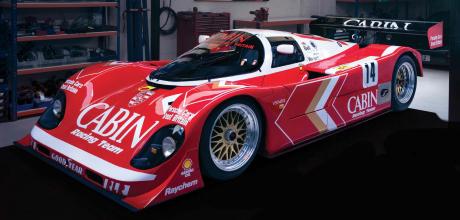The resurrection 1988 Porsche 962-200 RLR
Ready to go racing after an extensive two-year restoration, RLR 962-200 is one of the most historically significant Group C prototypes ever to wear the Porsche crest…
Words Dan Furr
Photography Dan Sherwood
GROUP EFFORT The resurrection of RLR 962-200
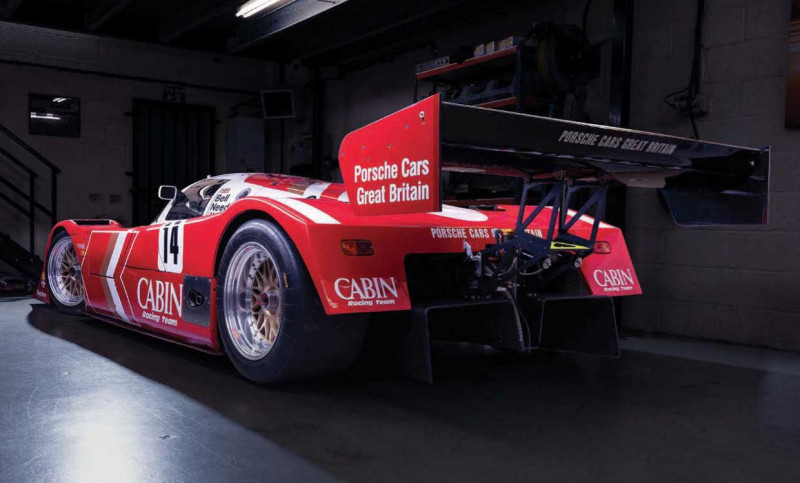
It’s a dull, damp Wednesday. We’re standing in the grounds of a nondescript industrial estate located thirty minutes from Silverstone. Looking around, there’s nothing remarkable about our surroundings, but as we make our way into the workshop behind one of the site’s unassuming roller doors, an explosion of red cuts through the grey of the day. There, low-slung, long and fresh from a two-year restoration, sits 962-200, dressed in the striking livery it wore at the 1989 24 Hours of Le Mans.
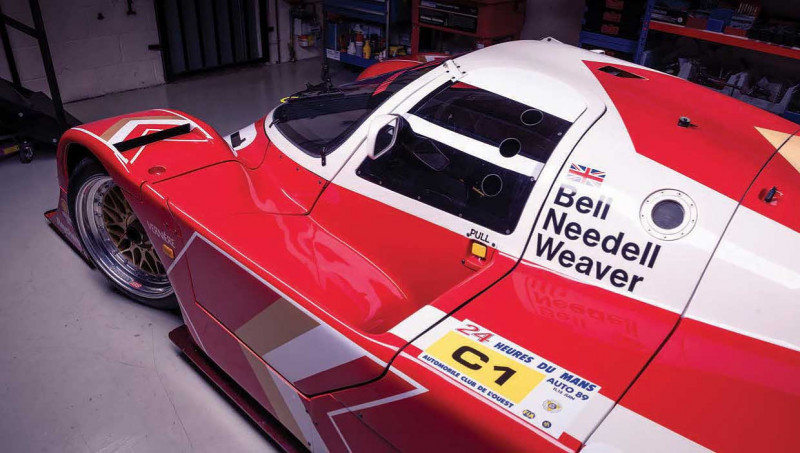
Derek Bell. James Weaver. Tiff Needell. The names listed on the side of this amazing machine tell only part of the car’s rich history. The seeds of success were sown in 1980, when Richard Lloyd’s achievements campaigning the first-generation Volkswagen Golf and, later, the Audi 80 under the GTi Engineering banner in the British Saloon Car Championship encouraged an invitation from Porsche to lead the charge of the newly launched 924 Carrera GTR for the manufacturer’s customer teams in endurance racing, an offer Lloyd gleefully accepted and one which saw camera brand, Canon, enter motorsport by becoming the team’s head sponsor. Following a string of respectable race results, Porsche ended the GTR programme in 1982, switching attention to the then new 956 for Group C. In continuing its association with the Stuttgart marque and adopting the 956 as its race car of choice, Lloyd’s team was thrust into the upper echelons of sports car racing, but despite enlisting the assistance of top wheelmen enjoying continued support from Porsche, it remained difficult to topple the works 956s. “If we do the same things as the factory team, we’ll never beat them,” Lloyd conceded.
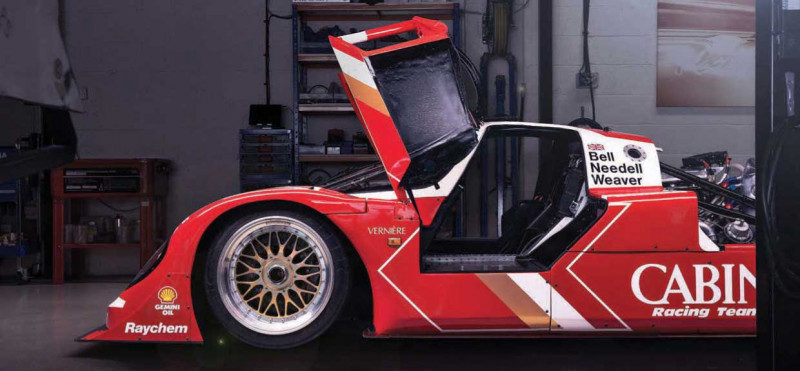
His solution was to design a bespoke 956 aluminium composite honeycomb monocoque and base chassis in partnership with renowned race car engineer, Nigel Stroud, a man who would later go on to design Mazda’s rotary-engined 787B, winner of the 1991 24 Hours of Le Mans. After much development work, the team’s custom creation — structurally superior to that of Porsche’s works cars — emerged as a 956 GTi-106B, a name sanctioned by Porsche and intended to separate this particular Group C track attacker from the 956s fielded by the factory team. Bodywork alterations included carbonfibre front and rear wings (the latter a two-piece design), while a whole new front suspension arrangement was introduced. Unfortunately, a serious accident at the 1,000km of Spa in 1985 necessitated the build of a replacement chassis, by which time the 962 (an evolution of the 956) had already been adopted by the works team, not least due to the 956 being ineligible for North America’s IMSA GTP Championship on the grounds of safety — the driver’s feet were ahead of the front axle centre line. When building its replacement 956 GTi chassis, Lloyd’s team introduced 962 design cues, including shifting the cabin further back.
ONE OF THE FIRST PORSCHE CUSTOMER TEAMS TO RECEIVE THE LATEST FULLY WATER-COOLED, TURBOCHARGED, THREE-LITRE 935/83 ENGINE
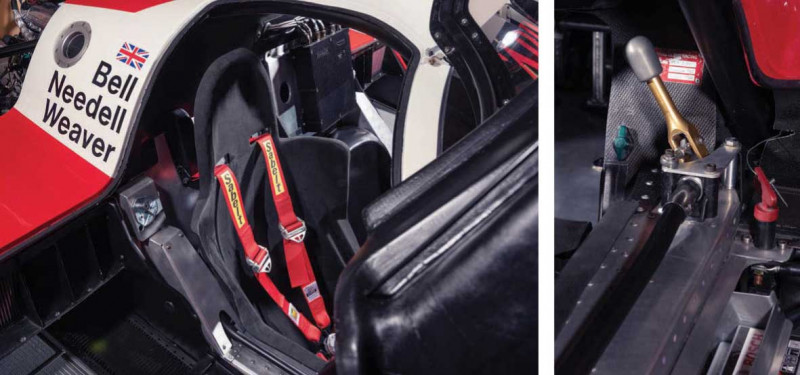
The 962’s success is well documented, but Lloyd once again found himself chasing the Porsche factory team, leading him to approach Stroud with a commission for an updated version of the pair’s previously developed honeycomb chassis in readiness for the 1987 World Sportscar Championship. Designated 962-106B, the resulting car’s win at the year’s Norising street circuit in Germany proved the design had huge potential, which the team hoped to realise with the first chassis of what would become known as the Richard Lloyd Racing 200 Series.
It’s the car you see on these pages, designated RLR 962-200 and retaining the pushrod front suspension arrangement from the earlier 956 GTi, but now incorporating a carbon-fibre honeycomb panel behind the dashboard and centre spine for even greater rigidity. The standard 962 chassis is a sheet aluminium monocoque, but the stiffness delivered by the honeycomb design forming the basis of Lloyd’s cars meant much firmer spring and roll bar rates could be adopted, thereby keeping downforce more consistent.
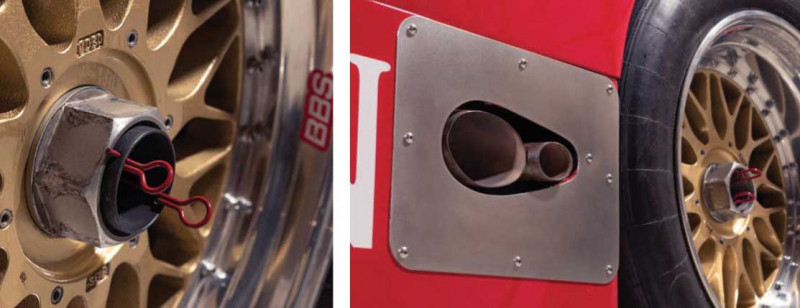
Talking of aerodynamics, Peter Stevens (formerly chief designer at Lotus, Lamborghini and McLaren, where he designed the firm’s legendary F1 supercar from a concept conceived by Gordon Murray), was enlisted to carry out bodywork modifications, which included the introduction of rear wheel covers. Stroud concluded they made 962-200 less pitch sensitive (a big plus for a ground effect car) than its predecessor, though many of the 1987 build’s performance enhancing elements were carried over, including an aerodynamically advanced nose.
Changes to the part for 1988 saw redesigned brake system cooling ducts in time for 962-200’s debut at the 1988 800km of Jerez, where the car — finished in black without any sponsor graphics — crossed the finish line in fourth place. Look at 962-200 side-on and one of the first things you notice is the giant rear wing being a separate component. Attached to the car by way of centre-mounted struts, it differs hugely from Porsche’s design, which is integrated with the 962’s bodywork. It’s also worth noting Richard Lloyd Racing, along with Joest, was one of the first Porsche customer teams to receive the latest fully water-cooled, turbocharged, three-litre 935/83 engine managed by a Bosch Motronic MP1.7 ECU. Power output of 750bhp was only a modest increase over the earlier, more basic MP1.2 unit, but the newer system incorporated electronically controlled wastegates, data logging and even real-time telemetry, giving teams unprecedented data acquisition abilities, albeit at eye-watering cost.
After recording a fastest lap at the 1988 1,000km of Spa and earning a podium finish at the Tampa IMSA Group C World Challenge, 962-200 was equipped with carbon brakes (Lloyd’s team was one of the first to adopt the technology) and was joined by a second RLR car (962-201) for a two-962 assault on the 1989 season. 962-200’s black body graphics were replaced with the radiant red you see here, and after turning in a second-place finish at the Silverstone Supersprint Supercup (try saying that after a couple of shandies!) in May, it was time to tackle Le Mans. Enter the trio of Bell, Weaver and Needell. Sadly, while rocketing along in seventh position, retirement two hours from race end called time on the car’s appearance at Circuit de la Sarthe. A season end fourth-place finish at the 1989 Trofeo Hermanos Rodriguez in Mexico preceded a quartet of competitive outings in Japan the following year, though most were marked by disappointment: a DNF at the 500km of Fuji was followed by non-classification at the 480km of Suzuka due to heavy rainfall causing the race to be cancelled, while a return to Fuji was marred by an accident in practice necessitating withdrawal from the race and its follow-up, the 1,000km of Suzuka. 962-200 promptly disappeared from public view.
THINK FLOYD
Fast-forward to spring 1992, and an unused 200 Series chassis was sold at auction to race car preparation firm, ADA Engineering, for its entry into the year’s 24 Hours of Le Mans. Once again, Needell and Bell were called upon for driving duties, with the third Porsche pilot being Bell’s eldest son, Justin. The car finished in a commendable twelfth place overall. In contrast, now back to black, 962-200 was little more than a rolling chassis due to its leased MP1.7-managed motor being returned to Porsche after its competition life had come to a close. Nevertheless, the car’s then owner, Pink Floyd drummer and part-time racing driver, Nick Mason, loaned it to ADA to act as a spare parts donor for the team’s Le Mans effort, should the need arise.
After the race, Mason asked ADA to equip 962-200 with a ‘spare’ MP1.2 motor he had in his possession. Trevor Crisp, who was working as an ADA engineer and is the man behind Katana, the world famous 956/962 restoration specialist occupying the workshop we’ve invaded with our cameras, remembers the job involving a switch from nifty MP1.7 digital displays back to analogue gauges and the need to fit a NACA duct in the roof to aid engine cooling. This was largely because the MP1.2 engine makes use of air-cooled barrels and water-cooled heads, as opposed to the later powerplant being fully water-cooled.
Intercooler modifications and new wiring returned 962-200 to being operational, before it was sold in 1998 to American racing driver and historic car collector, Murray Smith, who competed with his new toy in the popular Historic Sportscar Racing series. A return to the UK in 2003 saw this well-travelled Porsche become part of the privately owned Historic Porsche collection, billed as the most important assembly of Porsche race cars anywhere in the world outside Zuffenhausen. Offered a new lease of life, the car competed with great success in the Group C series in Europe and recorded a significant win at the Group C 25th Anniversary Challenge, hosted at the Silverstone Classic.
Needless to say, this extraordinary 962 is a sure frontrunner for historic Group C racing long into the future, which is why Trevor was asked to restore the car and, in the process, return it to 1989 works-supported specification.
Beginning in 2018 and spanning the course of two years, 962-200’s transformation into the box-fresh Porsche you see here was extensive. After detailed photographic documentation, the car was stripped to a bare monocoque, which was subsequently cleaned and thoroughly inspected, with safety-critical suspension mounting points undergoing stringent crack testing. With a clean bill of health, the monocoque was then finished with fine Scotch-Brite pads to produce a period-correct finish, while the suspension was stripped down to its component parts. More crack testing followed, as did Keyphos coating of steel suspension items and rechromating the magnesium uprights. Ordinarily, the steering rack would be given the same treatment, if the host 956/962 requires it.
The gearbox was fully rebuilt, while its bellhousing was bead blasted and finished with a gold chromate conversion coating (another period correct look), ridding the parts of the shiny gold paint they’d been subjected to many moons ago. The main event, however, was the engine.
As mentioned previously, Richard Lloyd Racing handed back the MP1.7 force-fed flat-six leased from Porsche. Fortunately, Walsall-based motorsport engine specialist, Xtec Engineering, a firm with a strong pedigree producing championship-winning Group C engines, was able to build a completely new water-cooled MP1.7 unit based around a new factory crankcase Trevor had acquired. He confirms engines have always been the stumbling block when restoring a 956 or 962, primarily because the original motors were assembled with a more or less thirty-hour life expectancy (practice, qualifying and a daylong endurance race) before replacement was required.
Though all but two of the Group C Porsches Katana has restored have been kept in private collections (in other words, a return to racing hasn’t been a requirement), Xtec’s decision to reproduce the required cylinder barrels has enabled 962-200 to fully adopt the desired specification, which amounts to being fit and ready to win championships in the present. Due to the car being readied for serious historic racing, the decision was made to fit the latest MoTeC engine management system for improved reliability and parameter controls. The ECU is installed inside a replica MP1.7 case. Unless you look closely, you’d be hard pressed to spot the difference between Trevor’s creation and the real thing. The dashboard was also returned to a MP1.7 look with the appointment of a bespoke MoTeC tachometer indistinguishable from the factory original. In fact, the only tell-tale sign of change in the cabin is a small, considerately positioned MoTeC digital display unit.
As far as 962-200’s bodywork is concerned, the car’s previous owner had already reinstated the red 1989 Cabin livery. A new windshield and new side windows were added in Trevor’s workshop, as was the correct nose — as a consequence of accident damage, 962-200 was wearing a 1990 RLR front end (making use of bigger intake ducts) when it landed at Katana, but through Trevor’s international network of contacts on the Group C scene, he managed to locate the correct part, as well as a 1989-spec rear wing and a host of other 956/962 items, all from sellers in California and Canada. The nose and wing are now sitting pretty, back where they belong, adorning 962-200. The only parts missing are the rear wheel covers, though due to the bigger sidewalls of the Avon tyres currently mandated in place of period-specification Good Year or Dunlop rubber, they wouldn’t fit anyway.
Following completion of the restoration work and successful shakedown tests, 962-200 made an appearance at the 79th Goodwood Members Meeting as part of a record-breaking rollout of works and privateer 956/962 prototypes (the largest gathering of these cars to have been driven together to date). We can’t wait to see this magnificent Porsche back on track in the not too distant future.
Above The next time someone tells you your Porsche is too low and is difficult to climb in and out of, show them this!
Bottom left Mission control, RLR-style. Top right MoTeC ECU is stored inside a replica Motronic MP1.7 housing.
Below Interior is a straightforward affair, though dash dials have had to be switched to and from analogue with each engine and ECU swap.
A RETURN TO THE UK IN 2003 SAW THIS WELL-TRAVELLED PORSCHE BECOME PART OF THE PRIVATELY OWNED HISTORIC PORSCHE COLLECTION
Above Rear wing is independent of body, unlike the works 962s.
Below Bulging Avon sidewalls means the car’s rear wheel covers can’t be used.
Above Restoration at Katana took two years, starting in 2018.
Below Completely new engine has been built by Xtec and is managed by a modern MoTeC ECU.
Above RLR attracted big-name drivers, including Moss, Brundle, Lammers, Reuter, Mass, Wollek and many more


